The history of our humble orchard apple (Malus domestica) is a wild and wonderful one. Like the majority of our farmed fruits and vegetables, the simple supermarket apple began life in the wild, as a fruit known as the crabapple (Malus).
Grown over millennia, across the temperate Northern hemisphere, we now have over 7000 known apple cultivars! Farmers and orchard owners grew different varieties of apple for different desirable characteristics, like color and size, and also their suitability for different purposes, like eating or producing cider.
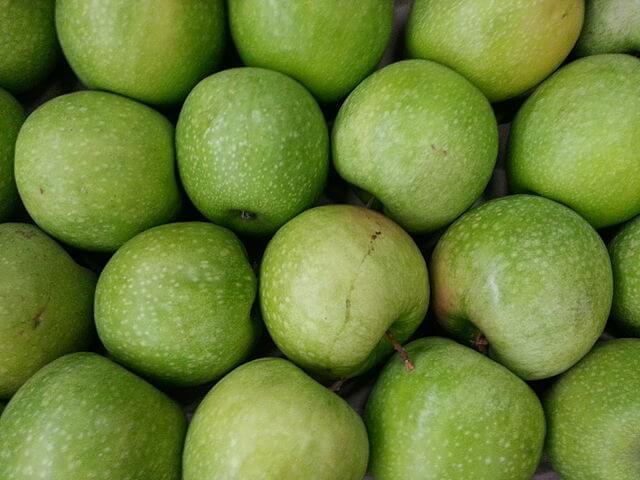
There are popular cooking apples, like the Jonagold and Granny Smith, perfect for baking pies and strudels. Eating apples, such as Red Delicious and Fuji. Plus some of the best apples for producing cider, like sweet Galas or bittersweet Chisel Jersey.
Wild crabapples can still be found along woodland edges, and tucked away in farmed field hedges across America. There are 4 native crabapple species in North America, but through cross pollination, many have hybridized with the apple varieties (Malus domestica) we keep in our gardens. So a tree you stumble across in the wild is likely it’s own unique variety!
So, How Are Wild Crabapples Different to Domestic Apples?
The apples we buy in supermarkets and grocers are simply a domesticated variety of the crabapples that still exist in the wild today. The crabapple genus (Malus) contains all of the domestic apple varieties we know and love. The exact ancestor of the majority of orchard apples was traced back to a Chinese crabapple species known as Malus sieversii.
Different Characteristics
The fruits of crabapple trees tend to be much smaller and more firm, and with a more intense flavoring. The trees of wild and domesticated apples are very similar, with the same pretty 5-petal blossom that blooms in spring.
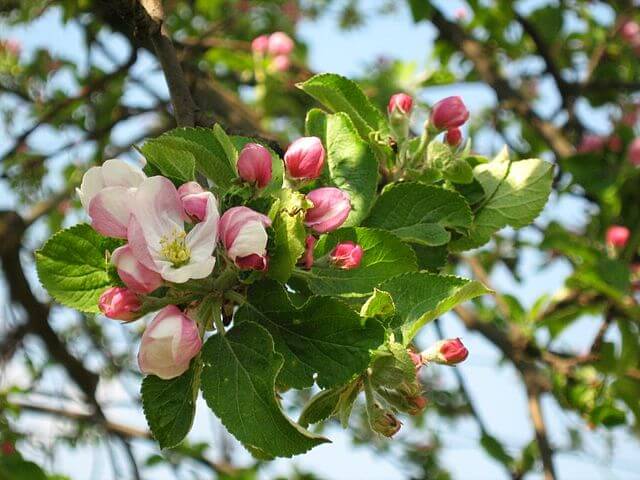
Do they taste different?
Whilst some wild apples are known for having a slightly bitter taste, all wild apples are perfectly edible. For more information on foraging crabapples, and recipes check out the post ‘Are Crabapples Edible’? Some are sweeter than others, and varieties with a particularly russeted skin can have a slight nutty flavoring.
Whilst we are used to the sweet, round and juicy apples found in markets and shops today. The original ‘wild apples’, or crabapples, found around the world have a wide variety of characteristics. From odd shapes and sizes, to unique flushes and patterning.
The First Orchard Apples in North America
Whilst native Americans farmed and harvested the native crabapple species that grew throughout North America, like the Oregon crabapple (Malus fusca). New apple species, varieties and seedlings were brought across from Europe when colonisers first came to America. An apple known as the Roxbury Russet is believed to be the first variety to have actually originated in North America.
Apples had been widely domesticated within temperate Europe and Asia over millennia, and studies have concluded that the vast spread of seeds and varieties was greatly due to trade along the Silk Road.
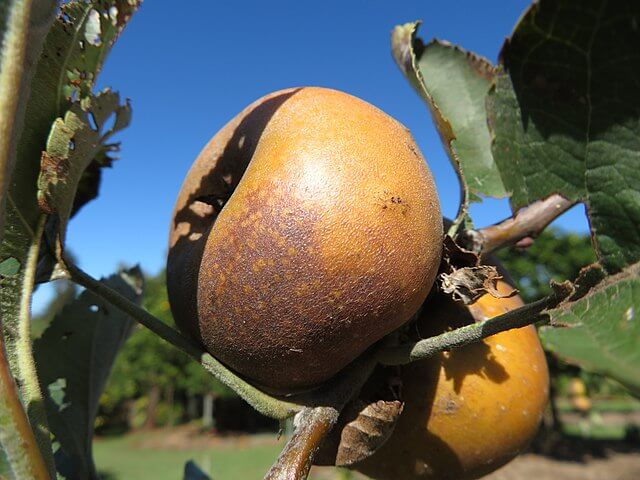
Apple Grafting and Creating Varieties
Apple seeds are genetically different to the parent plant on which they are produced. The seed is created with pollen brought by a bee from a ‘mystery’ apple tree that the bee had visited previously. This explains why so many different varieties of crabapples can be found in the wild, as they easily hybridize. It also explains why most orchards use techniques like apple grafting. Many orchards use wild crabapples as root stocks for their favored apple variety, as crabapples usually have good resilience.
For example, a hugely popular apple known as the McIntosh Red (which inspired the name of the famous Apple brand!) was first grown in Ontario in the early 1800’s by a New York State farmer. Through grafting, the McIntosh family were able to grow and sell their popular apple again and again. Which means McIntosh apple varieties today are from a graft linked back to that original tree!
Johnny Appleseed
John Chapman, better known as Johnny Appleseed, was a man who helped to establish orchards in the American Midwest in the 19th century. Well liked for his kind nature and his apple expertise, he has become a bit of an American apple legend. The apples he grew weren’t generally for eating, but for creating cider and livestock feed. Both highly valuable products at the time. He preferred wild apple seeds, and was actually against the idea of grafting.
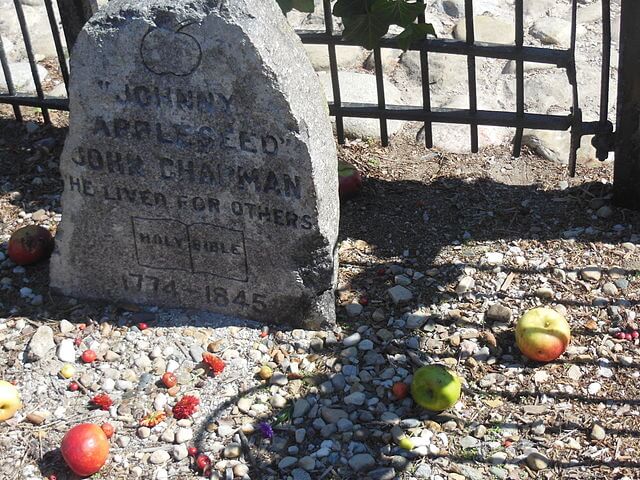
American Apple Varieties on the Rise
Thanks to the first colonists (who were required to plant 50 apple or pear trees on their new land) and Johnny Appleseed, many new apple varieties began to emerge. Varieties perfect for eating straight from the tree, creating applesauce and even apples which lasted for months in storage.
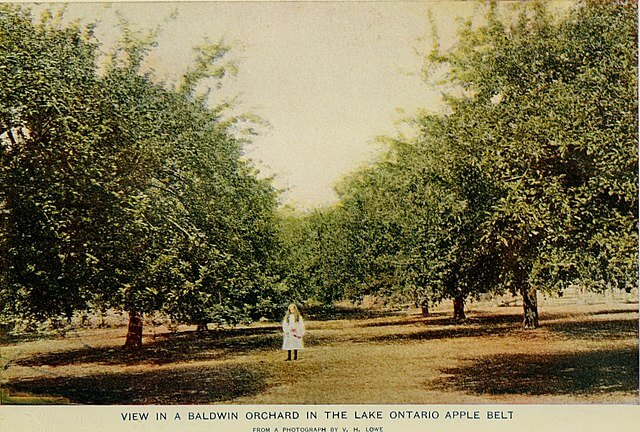
Whilst our supermarkets tend to be stocked with the same standard varieties of apple, take time to explore farmers markets and local producers of unusual apple varieties. Some of these old varieties are becoming lost as a handful of popular varieties dominate the market. Apples like the Roxbury Russet (1640) and Baldwin (1740) have a great history, and give us an insight into the diverse and mysterious lineage of the humble apple!







2 Responses
Crabapple r flexible n their orchards survived Montreal ice storm of 1997 whereas apple trees w their bigger heavier less bendable branches were split n damaged or chards wold fruits less sweet n more protein n peel fiber plant wilds
That’s interesting. It makes sense that the heavier fruits of domestic apples would break the branches while the crab apples would be a lot more resilient.